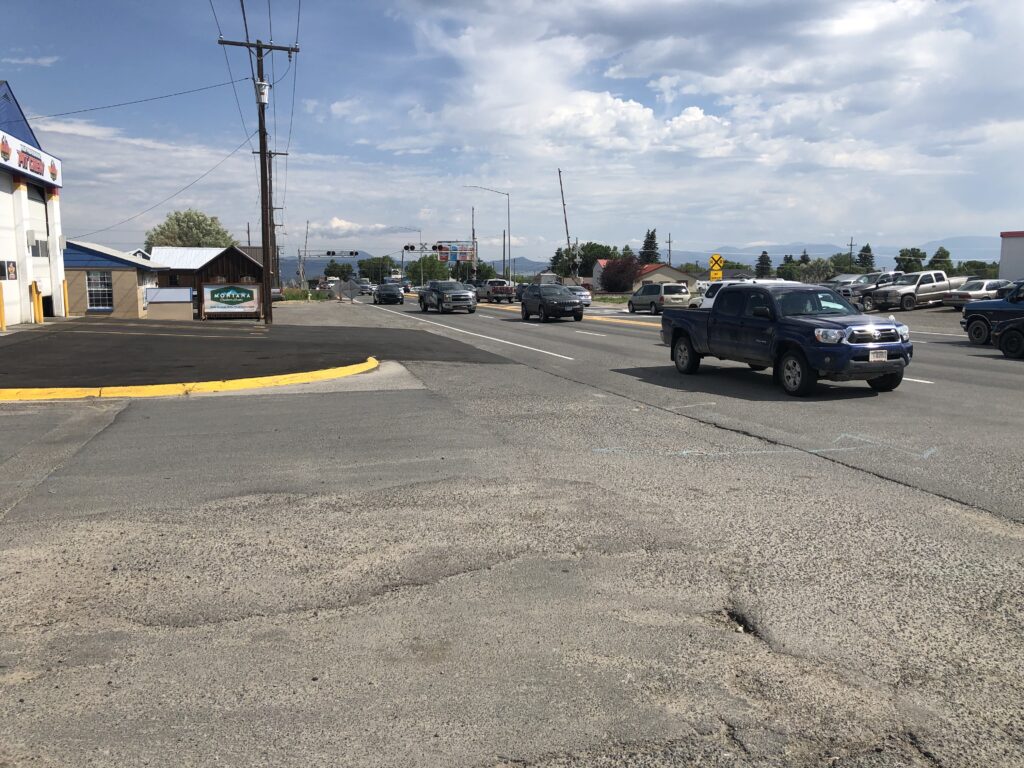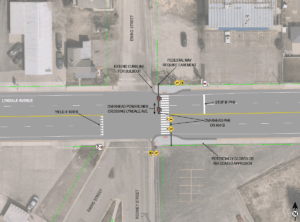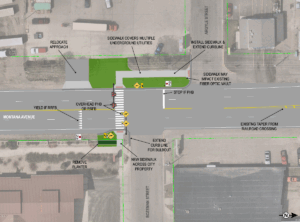
RPA explored ways to make it easier and safer for people to cross busy streets and reach the Centennial Trail. By studying two key locations, the team identified improvements that enhance comfort, visibility, and overall pedestrian experience while supporting better neighborhood connections.
RPA conducted a preliminary engineering study to identify and evaluate pedestrian crossing improvements aimed at enhancing non-motorized access and connectivity, with a particular emphasis on supporting access to the Centennial Trail. The study focused on two key crossing locations: Lyndale Avenue at Ewing Street and Montana Avenue at Bozeman Street. Both locations are situated on high-traffic, multi-lane roadways that currently serve as significant barriers to safe and convenient pedestrian movement.
The evaluation considered a variety of crossing design configurations, including maintaining existing curb lines, installing curb extensions (bulb-outs) to reduce pedestrian crossing distances, and incorporating center refuge islands. Each configuration was assessed based on several criteria: pedestrian accommodation, vehicular impact, overall safety, physical constraints, and cost-effectiveness.
In addition to geometric design elements, the study also analyzed traffic control treatments, specifically Pedestrian Hybrid Beacons (PHBs) and Rectangular Rapid Flashing Beacons (RRFBs), to determine their suitability for each proposed crossing configuration.
The study concluded with a set of recommendations that balance optimal pedestrian safety and comfort with manageable costs and minimal disruption. For both crossing locations, it is recommended that curb bulb-outs be constructed along with the installation of overhead-mounted RRFBs to improve driver yield rates and enhance overall pedestrian safety. These findings provide a foundation for advancing the preferred alternatives into the design development phase.
Project Details
Client
City of Helena
Location
Helena, Montana



